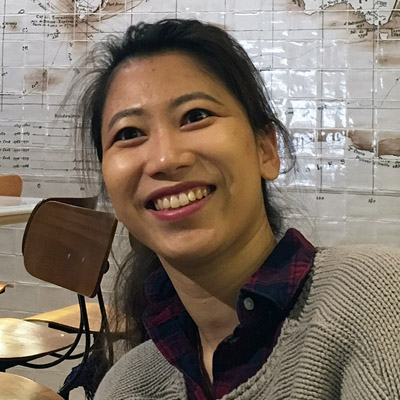
Hannah Song Lee, Ph.D., is a staff scientist, Section on Mechanics and Tissue Remodeling Integrating Computational & Experimental Systems (MATRICES) in NIBIB’s intramural research program.
Formerly, Dr. Lee was a research scientist and instructor (systems physiology, cell biology and problem-based learning) in the Walter H. Coulter Department of Biomedical Engineering at the Georgia Institute of Technology and Emory University.
Dr. Lee earned a bachelor’s and master’s degree in mechanical engineering from Korea Advanced Institute of Technology (KAIST) and a Ph.D. in biomedical engineering at the Georgia Institute of Technology and Emory University in Atlanta. She was a postdoctoral fellow in Institute of Biomedical Engineering at the university of Toronto.
Dr. Hannah Song Lee’s academic background encompasses mechanical engineering, cell biology and physiology, with a focus on the cardiovascular field. Dr. Lee’s expertise is in stem cell bioengineering, tissue engineering, vascular mechanics, and disease models. Cardiovascular disease is the leading cause of death worldwide. With the aging population, there is an increased demand for effective cardiovascular disease treatments and life-saving drugs and procedures. Unfortunately, most of the current treatments only delay the progression of disease but do not promote regression or provide a cure. Specifically, Dr. Lee focuses on understanding how the cellular environment affects disease initiation and progression based on the overall hypothesis that mechano-transduction and biochemical signals from the microenvironment and neighboring cells play a crucial role in cardiovascular disease progression. Sickle cell disease is a genetic disease caused by a mutation in hemoglobin resulting in many cardiovascular complications including dilated cardiomyopathy, vasculopathy, thrombosis, and stroke. The prognosis is bad resulting in shorter life span, various lifetime complications, especially, causing a significant increase in stroke in young children. Dr. Lee has been focusing on creating multimodal imaging workflow using magnetic resonance angiography (MRA), micro computational tomography (microCT), and tissue clearing to obtain functional, morphological, and molecular data across multiple scales from organs to cellular details using mouse model of sickle cell disease. By understanding disease mechanisms, more effective treatments can be developed to improve the life of individuals suffering with sickle cell disease and/or cardiovascular disease. Stem cells have provided great hope in the realization of regenerative medicine through their ability to self-renew and differentiate into functional cell types including cardiomyocytes, endothelial and hematopoietic cells of the cardiovascular lineages. However, there are several challenges that need to be addressed to translate the demonstrated biological properties of stem cells into robust and efficacious cardiac therapies. The overall goal of my research program is to use engineering approaches to develop cardiovascular model systems to mimic cellular mechanisms observed in the disease progression including myocardial infarction, hypertrophy cardiomyopathy, vasculopathy, and stroke.
